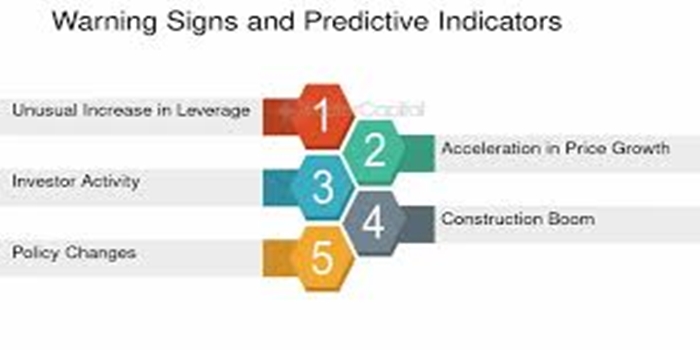In this article, we explained the meaning of predictive scarcity, the examples, the features, we also talked about the benefits.
Definition
Predictive Scarcity refers to using predictive technologies, like those in fields such as artificial intelligence and data science, to anticipate and manage potential shortages or limitations of resources, including water, data, or even perceived scarcity of goods and services.
The Features of Predictive Scarcity:
- Data-Driven Approach:
Predictive scarcity relies heavily on data analysis to identify patterns and trends that suggest potential resource shortages.
This includes historical data on production, consumption, supply chain disruptions, and other relevant factors.
- Forecasting and Projections:
Predictive analytics models use statistical methods and algorithms to project future demand, supply, and potential shortages.
These models can simulate various scenarios to assess the likelihood and impact of different outcomes.
- Early Warning System:
Predictive scarcity provides an early warning system, allowing organizations to take proactive measures to mitigate potential shortages.
This includes adjusting production plans, optimizing inventory management, and exploring alternative supply sources.
- Risk Management:
Predictive analytics helps organizations assess and manage risks associated with resource scarcity.
This includes identifying potential disruptions, evaluating the impact of shortages, and developing contingency plans.
- Decision Support:
Predictive scarcity provides valuable insights for decision-making, helping organizations allocate resources effectively and make strategic choices.
This includes optimizing production schedules, pricing strategies, and resource allocation.
- Application in Various Industries:
Predictive scarcity has applications across various industries, including manufacturing, retail, logistics, healthcare, and energy.
For example, it can help predict demand for essential medicines and manage supply chains to minimize shortages.
- Use of Machine Learning:
Predictive analytics often utilizes machine learning algorithms to identify patterns and make predictions.
These algorithms can learn from data and adapt to changing conditions, improving the accuracy of predictions.
- Impact on Decision-Making:
By understanding the potential for scarcity, organizations can make more informed decisions about investment, resource allocation, and operational planning.
This can lead to improved efficiency, reduced costs, and increased resilience.
- Behavioral Aspects:
Scarcity can also influence consumer behavior, leading to increased demand for limited resources.
Understanding these psychological factors can help organizations manage demand effectively.
- Importance of Collaboration:
Addressing predictive scarcity often requires collaboration among various stakeholders, including producers, consumers, and policymakers.
This includes sharing data, developing common strategies, and working together to mitigate potential shortages.
The Examples Predictive Scarcity:
Travel and Hospitality:
Travel agencies may show the number of times a particular hotel room has been booked on a specific day.
Airlines might display the limited number of seats remaining on a flight.
Booking platforms, like Booking.com, use the scarcity tactic to remind customers that supplies are limited and they may not have a room available later.
Online Retail:
Online retailers might show which colors or sizes of a product are already sold out, encouraging consumers to purchase before they’re gone.
Websites may include countdown timers to create a sense of urgency and encourage immediate purchase.
Items might be listed as “back in stock,” signaling that they were previously popular and are now again limited.
Limited-Time Offers:
Coffee shops create seasonal, limited-time premium offerings.
Businesses add “while supplies last” to promotions in print ads.
Other Scarcity Tactics:
Art dealers use numbered series on commercial art.
Businesses might list items as “back in stock” to let customers know others previously found the items popular.
The Benefits Predictive Scarcity:
- Optimized Resource Allocation: Predictive analytics allows businesses to anticipate demand and allocate resources, such as inventory or equipment, more effectively, minimizing the risk of stockouts or overstocking.
- Reduced Waste and Costs: By precisely forecasting demand, businesses can minimize waste and lower carrying costs associated with holding excess inventory, Tredence states.
- Improved Efficiency and Production: Predictive analytics enables businesses to optimize production processes, identify potential equipment failures, and address quality issues before they impact operations, resulting in smoother and more efficient workflows.
- Enhanced Risk Mitigation: By predicting potential shortages or disruptions, businesses can proactively develop contingency plans and take steps to mitigate risks, such as finding alternative suppliers or adjusting production schedules.
- Better Decision-Making: Predictive analytics provides data-driven insights that enable businesses to make informed decisions about resource allocation, investment, and operational strategies, leading to improved profitability and competitiveness.
Conclusion
Predictive Scarcity refers to using predictive technologies, like those in fields such as artificial intelligence and data science, to anticipate and manage potential shortages or limitations of resources, including water, data, or even perceived scarcity of goods and services.

